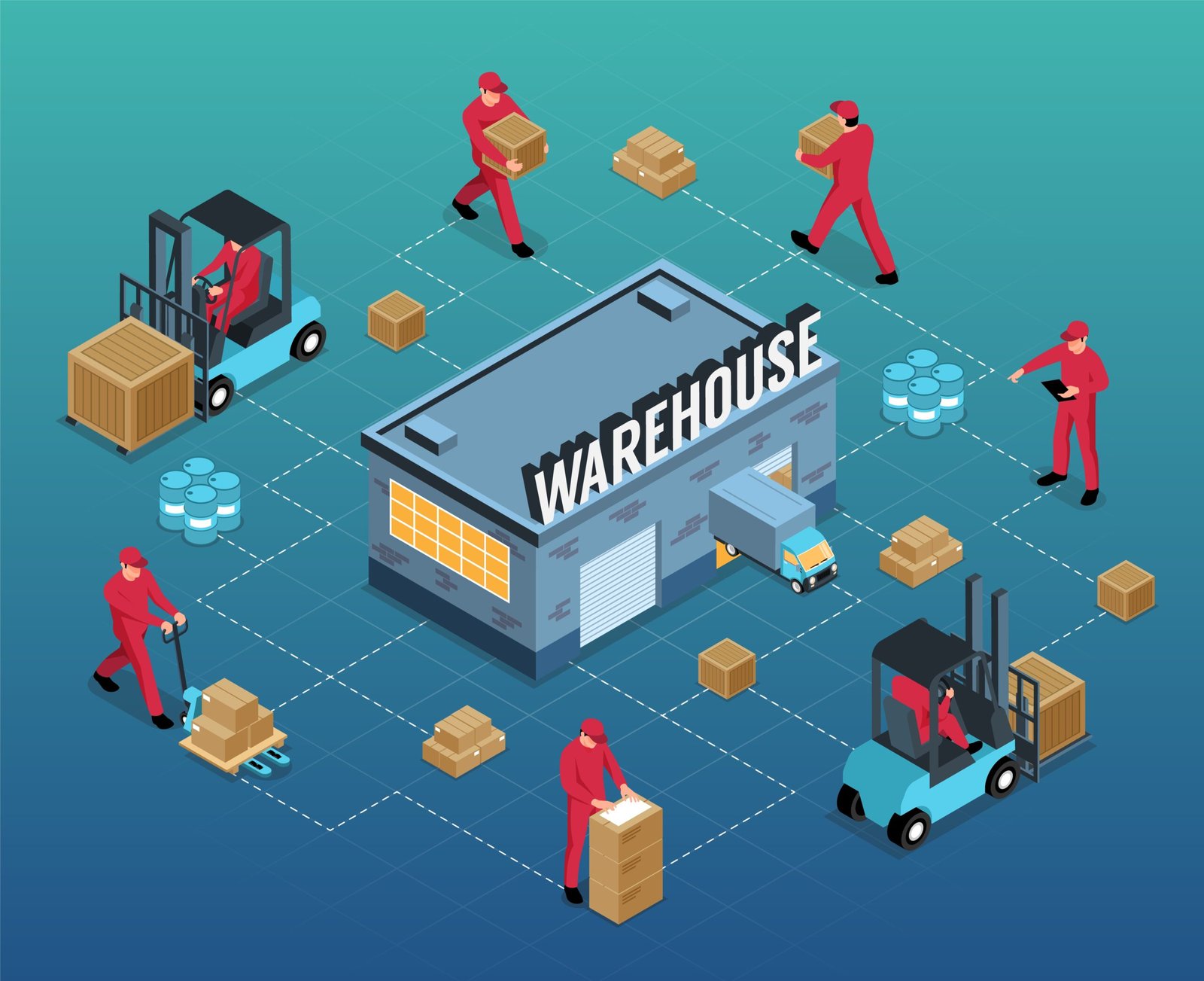Elevating Supply Chain Efficiency: Five Proven Strategies for Wholesales
- 1 What is the Supply Chain in Wholesale?
- 2 Why it is essential to improve supply chain performance
- 3 Strategy 1 – Implement Advanced Inventory Management Systems
- 4 Strategy 2 – Utilize Data Analytics for Demand Forecasting
- 5 Strategy 3 – Optimize Supplier Relationships
- 6 Strategy 4. Invest in Warehouse Automation Technologies
- 7 Strategy 5 – Embrace Sustainable Practices
- 8 Conclusion
In today’s business landscape, wholesalers are continually seeking ways to streamline operations and enhance supply chain efficiency. A well-optimized supply chain not only reduces costs but also improves customer satisfaction and boosts overall profitability. To help wholesalers achieve these objectives, we’ve compiled five proven strategies that can elevate supply chain efficiency and drive success.
What is the Supply Chain in Wholesale?
Supply chain in wholesale refers to the interconnected network of activities and processes involved in sourcing, procurement, production, inventory management, and distribution of goods from suppliers to wholesalers and ultimately to retailers or end consumers. It encompasses the entire journey of a product from its initial production or procurement stage to its final delivery to the end customer.
At its core, the supply chain in wholesale involves coordinating various stakeholders, including suppliers, manufacturers, wholesalers, logistics providers, and retailers, to ensure the smooth flow of goods along the entire supply chain continuum. This includes activities such as order processing, transportation, warehousing, inventory management, and demand forecasting.
Why it is essential to improve supply chain performance
Before we dive into the strategies, let’s look at why this is important. Supply chain efficiency is paramount for wholesalers due to its direct impact on various aspects of business operations, customer satisfaction, and overall profitability.
Here’s why elevating supply chain efficiency is crucial:
- Cost Reduction: An optimized supply chain helps wholesalers minimize operational costs associated with inventory management, transportation, and warehousing. By reducing unnecessary expenses, wholesalers can improve profit margins and reinvest resources into strategic initiatives that drive growth and innovation.
- Enhanced Customer Satisfaction: Efficient supply chain management ensures timely order fulfillment, accurate inventory availability, and reliable delivery services. Satisfied customers are more likely to become repeat buyers and brand advocates, contributing to long-term business success and market reputation.
- Competitive Advantage: In today’s competitive marketplace, supply chain efficiency can be a crucial differentiator. Wholesalers with streamlined operations can respond quickly to market demands, capitalize on emerging opportunities, and outperform competitors who lag in efficiency and agility.
- Risk Mitigation: A robust supply chain strategy minimizes the risk of disruptions such as stockouts, delays, and quality issues. By diversifying suppliers, implementing contingency plans, and leveraging data analytics for risk assessment, wholesalers can safeguard against potential disruptions and maintain business continuity.
- Strategic Decision-Making: Data-driven insights derived from an optimized supply chain enable wholesalers to make informed strategic decisions. From inventory management and pricing strategies to market expansion and product development, access to accurate and timely information empowers wholesalers to stay ahead of market trends and capitalize on emerging opportunities.
Strategy 1 – Implement Advanced Inventory Management Systems
Effective inventory management lies at the heart of a streamlined supply chain. Leveraging advanced inventory management systems allows wholesalers to gain real-time visibility into stock levels, track inventory movements accurately, and optimize replenishment cycles. By implementing these systems, wholesalers can minimize stockouts, reduce excess inventory holding costs, and enhance overall inventory turnover rates. Additionally, advanced inventory management systems often come with features such as demand forecasting and automated replenishment, enabling wholesalers to anticipate market demands and proactively adjust their inventory levels accordingly.
When selecting software, Wholesalers should look for features such as:
- Real-time inventory tracking: Allows wholesalers to monitor stock levels accurately and prevent stock-outs or overstocking.
- Multi-location support: Essential for wholesalers with multiple warehouses or distribution centers.
- Barcode and RFID integration: Streamlines inventory tracking and reduces manual errors.
- Demand forecasting: Predicts future demand based on historical data and market trends, helping wholesalers optimize inventory levels.
- Automated replenishment: Automatically generates purchase orders or production orders based on inventory levels and demand forecasts.
- Integration capabilities: Seamless integration with other systems such as ERP, CRM, and e-commerce platforms for data synchronization and process automation.
Once the inventory management software is chosen, wholesalers need to migrate existing data and integrate the new system with other business systems. This involves transferring product information, stock levels, customer data, and transaction history to the new system while ensuring data integrity and consistency.
Inventory management software. Learn more >>
Strategy 2 – Utilize Data Analytics for Demand Forecasting
In today’s data-driven world, harnessing the power of data analytics can significantly improve demand forecasting accuracy. By analyzing historical sales data, market trends, and customer behavior patterns, wholesalers can gain valuable insights into future demand fluctuations. These insights enable wholesalers to optimize inventory levels, allocate resources more efficiently, and minimize the risk of overstocking or stockouts. Furthermore, data analytics can help wholesalers identify emerging market trends and capitalize on new opportunities, ensuring long-term competitiveness in the dynamic wholesale landscape.
Strategy 3 – Optimize Supplier Relationships
Strong supplier relationships are essential for maintaining a smooth and efficient supply chain. Wholesalers should prioritize building collaborative partnerships with reliable suppliers who offer competitive pricing, consistent quality, and timely deliveries. By fostering transparent communication and mutual trust, wholesalers can negotiate favorable terms, streamline procurement processes, and reduce lead times. Moreover, strategic supplier relationships enable wholesalers to mitigate supply chain risks, adapt to market changes quickly, and capitalize on supplier innovations and expertise.
Strategy 4. Invest in Warehouse Automation Technologies
Investing in warehouse automation technologies is a strategic decision that can revolutionize the way wholesalers manage their inventory, fulfill orders, and optimize warehouse operations. Warehouse automation encompasses a wide range of technologies designed to streamline and automate various tasks within the warehouse environment, reducing manual labor, minimizing errors, and increasing efficiency.
Let’s explore some of the critical warehouse automation technologies that wholesalers can invest in:
- Automated Storage and Retrieval Systems (AS/RS): AS/RS systems are robotic systems that automatically store and retrieve inventory items from designated storage locations within the warehouse. These systems use advanced robotics, conveyors, and computerized controls to manage inventory storage and retrieval processes efficiently. AS/RS systems can significantly increase warehouse throughput, optimize storage space utilization, and improve inventory accuracy.
- Robotic Picking Systems: Robotic picking systems utilize robots equipped with advanced sensors, grippers, and vision systems to pick and pack individual items or orders within the warehouse. These robots can navigate warehouse aisles, locate specific items, and handle goods with precision and speed. By automating the picking process, wholesalers can accelerate order fulfillment times, reduce labor costs, and minimize picking errors.
- Conveyor Belt Systems: Conveyor belt systems are a fundamental component of warehouse automation, facilitating the smooth movement of goods throughout the warehouse. These systems use motorized conveyor belts to transport goods from one location to another, eliminating the need for manual carrying or lifting. Conveyor belt systems can automate material handling tasks such as sorting, merging, and diverting, enabling wholesalers to achieve higher throughput rates and faster order processing times.
- Warehouse Management Systems (WMS): WMS software integrates with warehouse automation technologies to provide real-time visibility and control over warehouse operations. WMS software offers features such as inventory tracking, order management, labor management, and performance analytics. By leveraging WMS software, wholesalers can optimize warehouse workflows, improve inventory accuracy, and enhance overall operational efficiency.
- Automated Guided Vehicles (AGVs): AGVs are self-guided mobile robots that can transport goods within the warehouse without human intervention. These vehicles use onboard sensors and navigation systems to navigate warehouse aisles, pick up and deliver goods, and interact with other warehouse equipment. AGVs can automate material transport tasks such as pallet movement, goods replenishment, and order staging, reducing reliance on manual labor and improving warehouse productivity.
Investing in warehouse automation technologies requires careful planning, evaluation, and implementation to ensure a successful transition to automated warehouse operations. Wholesalers should assess their specific operational needs, consider the potential benefits and challenges of automation, and select technologies that align with their business goals and objectives. By embracing warehouse automation, wholesalers can enhance efficiency, accuracy, and scalability in their warehouse operations, ultimately driving greater competitiveness and profitability in the wholesale industry.
Strategy 5 – Embrace Sustainable Practices
Sustainable supply chain practices not only benefit the environment but also contribute to cost savings and brand reputation enhancement. Wholesalers can adopt eco-friendly packaging materials, optimize transportation routes to reduce carbon emissions and implement energy-efficient warehouse facilities. By reducing waste, minimizing resource consumption, and supporting ethical sourcing practices, wholesalers can differentiate themselves in the market, attract environmentally-conscious customers, and foster long-term brand loyalty. Additionally, embracing sustainability initiatives can lead to cost efficiencies through reduced energy consumption, waste disposal, and regulatory compliance costs.
Conclusion
In conclusion, elevating supply chain efficiency is essential for wholesalers to stay competitive and thrive in today’s dynamic business environment. By implementing the five proven strategies outlined above – advanced inventory management systems, data analytics for demand forecasting, optimized supplier relationships, warehouse automation technologies, and embracing sustainable practices – wholesalers can streamline operations, enhance customer satisfaction, and drive sustainable growth. By continuously evaluating and refining their supply chain strategies, wholesalers can adapt to evolving market dynamics and maintain a competitive edge in the wholesale industry.



















